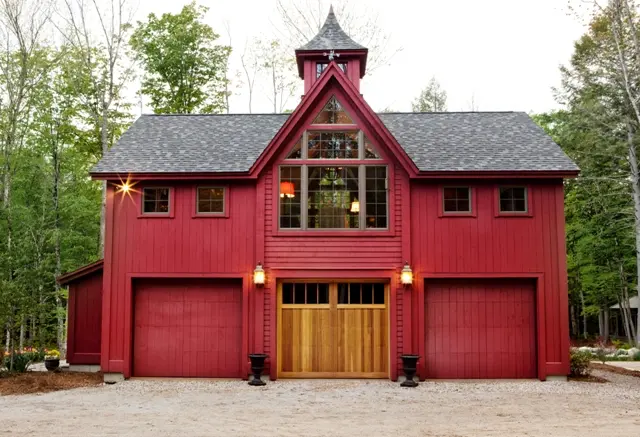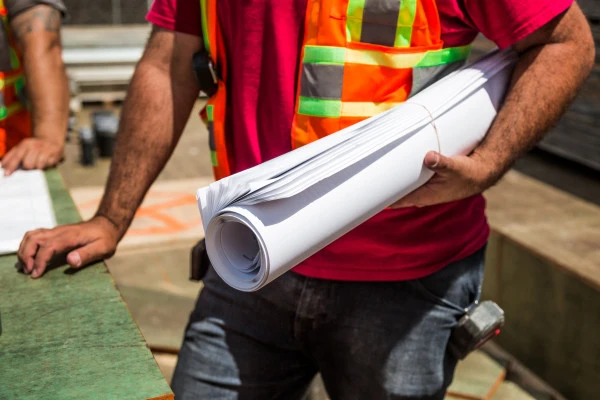How Much Does a Barndominium Cost to Build?

A barndominium, often shortened to "barndo", blends the utility of a barn with the comfort of a traditional home. Its origins trace back to the desire for spacious and versatile living spaces. These structures have grown in popularity due to their durability, affordability, and unique aesthetics.
Factors Influencing Barndominium Costs
1. Size and Layout
- The larger the structure, the higher the overall cost. The complexity and number of rooms also play a significant role.
- For instance, a primary 1,500 sq. ft barndo might range from $75,000-$150,000, while a 3,000 sq. ft one can reach up to $300,000.
2. Location
- Land costs vary dramatically. While rural areas offer land for $2,000 per acre, suburban or more coveted locations might ask for $10,000 per acre.
- Labor rates also differ; states with higher living costs generally have higher labor rates.
- Materials might be cheaper or pricier depending on local availability.
3. Materials Used
- Steel-framed barndos are more resilient but can be more expensive than their wood counterparts.
- Basic metal sidings are cost-effective, but costs will rise if you opt for high-end materials, like specific stones or luxury sidings.
4. Foundation Type
- A slab is the cheapest, averaging $6-$10 per square foot.
- Pier foundations can range from $5-$8 per square foot.
- Basements, while providing extra space, can cost upwards of $20 per square foot.
5. Finishings and Fixtures
Basic amenities decrease costs, while luxury items like granite countertops, hardwood floors, and top-tier appliances can quickly elevate the price.
6. Customization and Design Features
While a custom floor plan can give you your dream barndo, it'll also have higher architectural and design fees.
Additional Costs to Consider
1. Land Preparation and Excavation
This process can range from $1,500 for essential clearing to $15,000+ for significant excavation and grading.
2. Utilities
Setting up utilities might cost:
- Water: $1,500-$7,000
- Electric: $500-$3,000
- Sewage: $2,500-$5,000
- Internet: $100-$500 for setup
3. Permits and Fees
These are highly variable, but budgeting an extra $1,000-$5,000 is wise.
4. Exterior Features
- Driveways can range from $2,500-$10,000, depending on materials and length.
- Landscaping costs vary, but the national average is around $3,000 for basic projects.
5. Interior Features
- HVAC setup costs $3,000-$7,000 on average.
- Insulation costs range from $0.90-$2.50 per sq. ft.
- Painting and flooring can go from $1,000-$10,000+ depending on quality and size.
Pricing Examples and Breakdown
- Basic Barndominiums
- Features: Basic finishes, minimal rooms, standard size.
- Estimated costs: $75,000-$150,000
- Mid-range Barndominiums
- Features: Some custom features, quality materials, mid-sized.
- Estimated costs: $150,000-$250,000
- High-end Barndominiums
- Features: Luxury finishes, large size, many custom features.
- Estimated costs: $250,000-$500,000+
How to Calculate the Cost of Building a Barndominium
To derive a rough estimate for the cost of building your barndominium, you can use the following formula:
Total Cost = (Size Cost + Material Cost + Foundation Cost + Finishings Cost + Customization Cost + Utilities Cost + Land Prep Cost + Permit/Fee Cost + Exterior Features Cost + Interior Features Cost) × Labor Multiplier
1. Size Cost
Typically, you determine this by multiplying the price per square foot with the overall square footage of your barndominium
Size Cost = Price per sq.ft. × Total sq. ft.
2. Material Cost
You can estimate this based on whether you're using basic, mid-tier, or luxury materials. Research the average costs of the materials you want to use and multiply by the amount needed. Material Cost=Average Material Cost×Amount Needed
3. Foundation Cost
Decide on the type of foundation and use the price per square foot for that type multiplied by the total square footage.
Foundation Cost = Foundation Price per sq.ft. × Total sq. ft.
4. Finishings Cost
List all finishings (e.g., countertops, flooring) and multiply each by its unit cost to get a total.
Finishings Cost = ∑ (Unit Cost of Each Finishing × Quantity)
5. Customization Cost
If you have any unique architectural features or custom floor plans, estimate their costs and add them up.
6. Utility Cost
Sum up the costs for setting up water, electricity, sewage, and internet.
7. Land Prep Cost
Estimate clearing, grading, and other site preparation costs.
8. Permit/Fee Cost
Check with local authorities on permit costs and add a buffer for unforeseen fees.
9. Exterior Features Cost
Include driveways, landscaping, and outdoor structures costs.
10. Interior Features Cost
Total the costs for HVAC, insulation, painting, and flooring.
11. Labor Multiplier
This accounts for labor costs. If you're hiring professionals for everything, this might be as much as 25-50% of all the above costs. If you're doing some DIY, you can adjust this percentage downward.
Labor Cost = (Total of all above costs) × Labor Percentage
Cost-saving Tips
- Opt for locally sourced materials to save on transportation costs.
- Consider a mix of DIY and professional labor. For instance, tackle painting or landscaping yourself.
- Plan construction during off-peak seasons; some contractors offer discounts during less busy periods.
FAQ: Barndominium Cost and Construction
1. What exactly is a barndominium?
A barndominium, often referred to as a "barndo", is a hybrid structure that combines the functionality of a barn with the comforts of a traditional home. It is known for its open floor plans, metal construction, and adaptable spaces.
2. Why are barndominiums becoming so popular?
Barndominiums have gained popularity due to their durability, cost-effectiveness, customizable nature, and unique blend of rustic and modern aesthetics. They often provide more space and can be built quicker than traditional homes.
3. How long does it take to build a barndominium?
On average, a barndominium can take 4 to 9 months to complete, depending on its size, customization, and chosen construction process. Companies can complete pre-fabricated or simpler designs more quickly.
4. Is it cheaper to build a barndominium than a traditional home?
Generally, the basic structure of a barndominium can be more cost-effective than a conventional home, mainly due to material costs and simplified construction. However, the final price can be similar to or even more than a traditional home when you factor in high-end finishes, customizations, and interior amenities.
5. Can I build a barndominium anywhere?
You can technically build barndominiums in many places, but local zoning laws, HOA regulations, and building codes can dictate where and how you construct them. Always check with local authorities before starting your project.
6. Are barndominiums energy efficient?
Barndominiums can be highly energy efficient when adequately insulated and designed. The metal construction offers tight seals, and with the proper insulation, these homes can maintain comfortable temperatures with lower energy costs.
7. Do barndominiums hold their value?
Like any property, various factors, including location, condition, market demand, and maintenance quality, determine the value of a barndominium. With the rising popularity of barndominiums, many have seen good resale values, but it's essential to consider local market trends.
8. Can I expand my barndominium in the future?
One of the advantages of barndominiums is their adaptability. You can often expand them more efficiently than traditional homes, provided you have enough land and the expansion complies with local building codes
9. Is it possible to DIY build a barndominium?
Yes, many homeowners opt for a DIY approach, especially for interior finishes or if they have construction experience. However, hiring professionals is recommended for structural work, utilities, and specialized tasks.
10. How do I maintain a barndominium?
Barndominiums, with their metal construction, generally require less maintenance than wooden homes. Regularly check and clean gutters, ensure proper insulation to prevent condensation, check for rust spots, and repaint or reseal as necessary.
Questions to Ask When Evaluating Barndominium Building Companies
1. Experience and Background
- How many years have you been building barndominiums specifically?
- Can you provide references from previous clients?
- Have you received any industry awards or recognitions for your barndominium builds?
2. Licensing and Insurance
- Are you licensed to build in this state/area?
- What type of insurance do you carry? Does it cover any potential damages to my property during construction?
- Do you offer warranties on your work?
3. Construction Process
- Can you walk me through your construction process from start to finish?
- How do you handle unforeseen construction challenges or delays?
- Do you provide regular updates during the construction process?
4. Customization and Design
- Can I customize my barndominium's layout and design? To what extent?
- Do you have an in-house designer or architect, or will I need to hire one separately?
- Do you offer pre-designed floor plans?
5. Materials and Suppliers
- What type of materials do you typically use for your builds?
- Can I choose or upgrade materials? If so, how does this affect the overall cost?
- Are the materials locally sourced?
6. Pricing and Payment
- Could you give a detailed outline of all the associated costs?
- Do you offer financing options or partnerships with local banks?
- What is your payment schedule like? Are there any upfront costs?
7. Timeline and Availability
- How soon can you start the construction?
- What is the estimated completion time for my project?
- How do you manage multiple projects at once?
8. After-Sales Service
- What kind of post-construction support do you provide?
- If issues arise after the build is complete, how do you handle them?
- Are there any maintenance tips or guidance you offer to new barndominium owners?
9. Local Regulations and Permits
- Will you handle obtaining the necessary permits for the build?
- How familiar are you with the local zoning laws and regulations regarding barndominiums?
- Have you ever faced issues with non-compliance or building code violations?
10. Sustainability and Efficiency
- Do you offer eco-friendly or energy-efficient building options?
- Can you build with energy-efficient appliances or solar panel installations?
- What measures do you take to ensure the structure is well-insulated and energy-efficient?
11. Communication
- Who will be my primary point of contact during the build?
- How often will we have scheduled check-ins or updates?
- How do you handle client concerns or feedback during the process?
When evaluating barndominium building companies, it's crucial to listen to their answers, review their portfolios, and consider past client feedback. This comprehensive approach will help you choose a company that aligns with your vision and priorities.
The opinions articulated in this piece are the guest author's and may not necessarily align with those of Crackerjack. Find more about staff authors of Crackerjack

